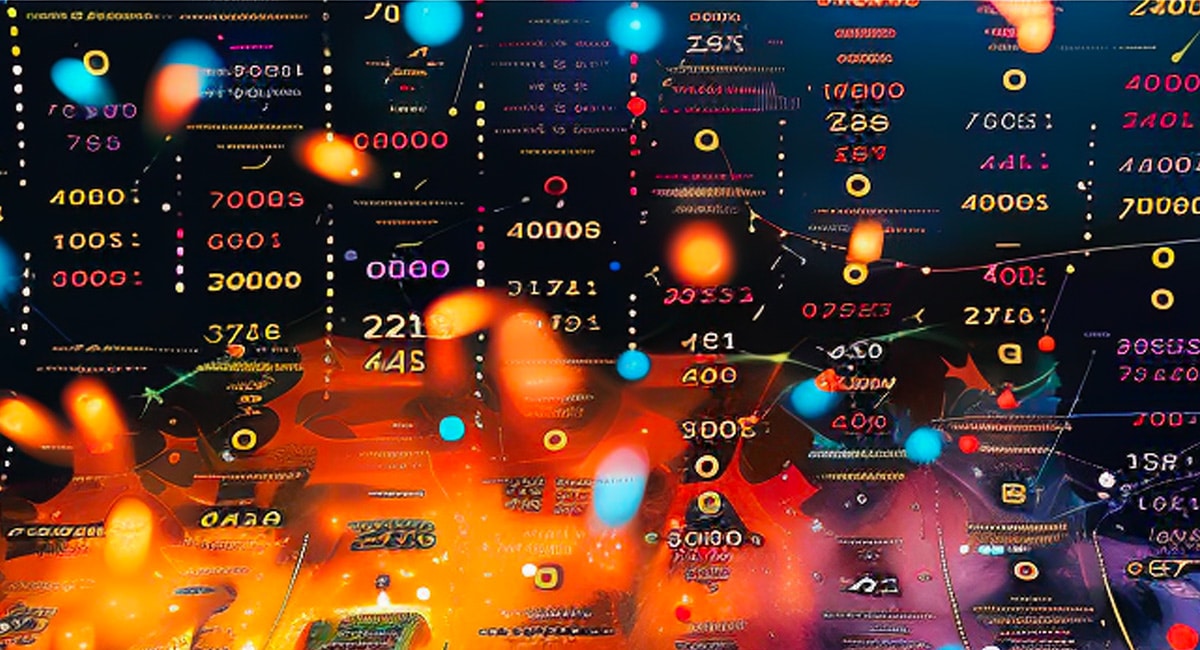Computers are great at understanding numbers, but not with words. In order to help machines understand, manipulate, and produce words, we have to convert those words to numbers using a process called text vectorization.
Text vectorization is the process of turning words and documents into mathematical representations. These representations capture the semantic meaning in a multidimensional space. It’s a critical part of natural language processing (NLP), a branch of artificial intelligence that enables machines to work with human language.
Once text data is in number form, computers can do amazing things with it, like figuring out if a review is positive or negative, or sorting through thousands of emails to find the ones talking about a specific topic.
Let’s explore text vectorization and how it plays a role in NLP and AI.
What is Text Vectorization?
Textual data, comprising words, sentences, or documents, is inherently qualitative and unstructured. Vectorization algorithms transform this text into numerical vectors by encoding various linguistic features such as word frequency, word context, or word relationships.
Common techniques of text vectorization include bag-of-words, TF-IDF (Term Frequency-Inverse Document Frequency), transformer models like BERT, and deep learning models such as Word2Vec or GloVe. We’ll get into more of this in a moment.
Significance for Machine Learning and Data Analysis
Vectorization is crucial for machine learning and data analysis in NLP for several reasons:
Feature Representation: Numerical vectors derived serve as input features for machine learning models. This allows algorithms to process and analyze textual data to perform tasks like text classification and sentiment analysis.
Semantic Understanding: Vectorization captures semantic relationships between words, allowing algorithms to understand the meaning and context of text. Semantic relationships remove the need to depend upon pure syntactic differences (i.e. contrast semantic and synthetic similarity) to understand text. If two sentences have the same semantic meaning, then their vectors will be very similar, independent of their synthetic differences. This enhances the accuracy and performance of NLP tasks.
Data Integration: Vectorized representations of text can be integrated with structured data for comprehensive analysis, enabling organizations to derive insights from both textual and non-textual sources.
Overall, NLP vectorization bridges the gap between human language and machine understanding. This allows for a wide range of applications in machine learning, data analysis, and artificial intelligence.

Why Do We Vectorize Our Text?
Vectorizing text is the only way computers understand words. Unlike humans who comprehend language through context and semantics, computers rely on numerical data.
By converting text into numerical vectors, we give computers a way to process and analyze language. These vectors represent words, sentences, or documents in a format that algorithms can manipulate and compare.
Essentially, vectorization bridges the gap between human language and machine processing, enabling computers to perform language-based operations.
How Do I Convert Text to Vectors?
Vectorizing text is typically done using techniques like word embeddings or document embeddings. We’ll get into specific techniques in a moment, but the process looks like this:
- Tokenization: This optional stage splits text into individual words or tokens. Note that there are models that produce a single embedding for a full document.
- Embedding Lookup: Look up pre-trained word embeddings for each token.
- Aggregation: Aggregate the embeddings of individual tokens into a single vector representation for the entire text. This can be done by averaging the embeddings, taking the maximum or minimum value along each dimension, or using more sophisticated methods like weighted averaging.
- Sentence-transformers: Some models, such as sentence transformers, directly create embeddings for the full sentence and don’t aggregate. They deliver the full sentence. Sentence-transformers are currently one of the most used tools to create embeddings for sentences, paragraphs, and documents.
You can use libraries like TensorFlow, PyTorch, or Gensim to implement these techniques and perform the conversion from text to vectors in Python. Additionally, many pre-trained models are available for download, which you can use directly or fine-tune on your specific dataset if needed. Sentence-transformers and Hugging Face transformers are also heavily used for this purpose.
The Benefits of Text Vectorization
The importance of vectorizing text cannot be overstated. It’s the backbone of modern NLP. It empowers algorithms to understand, analyze, and generate human language accurately and efficiently. Here’s why:
Numerical Representation Fuels ML Algorithms
Algorithms in machine learning, including those used in NLP, operate on numerical data. Vectorization converts textual data into numerical representations, allowing algorithms to process and analyze language effectively.
By representing words, phrases, and documents as vectors in high-dimensional spaces, vectorization lets algorithms perform mathematical operations and extract meaningful patterns from textual data.
Enabling Advanced NLP Tasks
Vectorizing text is the cornerstone of many advanced NLP tasks. Techniques like word embeddings, which capture semantic relationships between words, enable tasks such as semantic similarity, word analogy, and language translation.
Moreover, vectorized representations of text facilitate tasks like sentiment analysis, named entity recognition, and summarization. Without robust vectorization techniques, the performance of these advanced NLP tasks would be severely limited.
Contributing to Accuracy and Efficiency
Vectorization plays a crucial role in enhancing the accuracy and efficiency of NLP models. By capturing semantic relationships and contextual information, vectorized representations enable models to better understand the meaning and context of textual data.
This leads to more accurate predictions and classifications in tasks such as text classification, sentiment analysis, and machine translation. Additionally, vectorization techniques like TF-IDF help prioritize informative terms, reducing noise and improving the efficiency of NLP models.

Key Applications of NLP Vectorization
Vectorization techniques in NLP find diverse applications across various domains. Let’s explore some key applications:
Sentiment Analysis
Sentiment analysis involves determining the sentiment or emotion expressed in textual data. Vectorization converts text into numerical vectors, which are then fed into machine learning models. These models can classify text as positive, negative, or neutral based on the semantic information encoded in the vectors.
Sentiment analysis is used in various industries, including marketing, customer service, and finance, to analyze and understand customer opinions and attitudes expressed in text. It’s used to evaluate social media posts, customer reviews, and surveys. This aids decision-making, brand reputation management, and product development.
Text Classification
Text classification involves categorizing text documents into predefined categories or labels. Vectorizing text transforms documents into numerical representations, making it easier for machine learning algorithms to distinguish between different classes.
Text classification is widely used in spam detection, topic categorization, sentiment analysis, and language identification. By accurately classifying text, you can automate tasks, streamline processes, and improve decision-making.
Information Retrieval
Vectorized queries can be matched against vectorized documents using similarity measures like cosine similarity. This application is instrumental in search engines, recommendation systems, and question-answering systems, where retrieving relevant information quickly is paramount.
Named Entity Recognition (NER)
Named Entity Recognition (NER) involves identifying and classifying named entities in text, such as persons, organizations, locations, dates, and numerical expressions. Vectorization helps NER by representing words or phrases that denote named entities as numerical vectors.
Machine learning models can then use the vectorized date to recognize and classify named entities in text. It’s useful for information extraction, entity linking, and knowledge graph construction, which helps to complete tasks like document summarization, event extraction, and sentiment analysis.
Text Vectorization Techniques in NLP
You can use various vectorization techniques to transform textual data into numerical representations. These techniques enable machines to understand and process human language. Each technique offers unique advantages and trade-offs, catering to different NLP tasks and applications.
Let’s explore some prominent vectorization techniques used in NLP.
Word Embeddings
Word embeddings (also called word vectors) represent a significant advancement in vectorization. This is a technique used to represent complex, high-dimensional data like words, sentences, or even entire documents. They’re better at showing what words mean and how they’re related.
Word embeddings move away from old methods like one-hot encoding. In one-hot encoding, every word is a separate binary factory, which means it only has a basic representation. But word embeddings group similar words close together, thereby capturing their semantic relationship.
This technique of vectorizing text helps machines understand words based on how they’re used and ultimately enhance the performance of NLP tasks such as semantic similarity, word analogy, and language translation.
There are several models for creating word embeddings:
Word2Vec: Made by Google, this model uses simple neural networks. It’s based on the idea that words used in similar ways have similar meanings. Word2Vec has two types: one that looks at words together and another that predicts surrounding words.
GloVe (Global Vectors for Word Representation): GloVe mixes two approaches to learn word embeddings. It uses word co-occurrence (how often words appear together) to understand word meanings on a broader scale.
FastText: Created by Facebook AI Research, FastText breaks words down into smaller pieces, like character groups. This helps it understand different word forms and rare words, which is especially helpful for languages that change words a lot.
Bag-of-Words Model
The bag-of-words (BoW) model is a simple and straightforward approach to vectorizing text data. It represents documents as vectors, where each dimension corresponds to a unique word in the vocabulary, and the value represents the frequency of that word in the document.
Despite its simplicity, the BoW model is widely used in tasks like document classification, sentiment analysis, and information retrieval. However, it ignores the order and context of words, which can limit its effectiveness in capturing semantic meaning.
TF-IDF
Term Frequency-Inverse Document Frequency (TF-IDF) is a statistical measure that evaluates the importance of a term in a document relative to a corpus. It considers both the frequency of a term in a document (TF) and the inverse document frequency (IDF) across the entire corpus.
TF-IDF assigns higher weights to terms that are frequent in a document but rare in the corpus, thus emphasizing terms that are more discriminative. This technique is widely used in information retrieval, keyword extraction, and document clustering, as it effectively balances term importance and document frequency, leading to more informative vector representations.
Transformers
Transformers are a type of neural network architecture that have become a cornerstone in the NLP. Unlike other models that process text sequentially (one word at a time), transformers process entire sequences of text simultaneously. This efficiency results from employing positional encodings to encode the order of works/tokens in a sentence, rather than feeding the sentence in its order into the network. Sequentiality is encoded in the input rather than through the architectural design of the model.
The parallelization/non-sequential processing comes from the fact that we encode order of words/tokens in a sentence via so called “positional encodings”, rather than feeding the sentence in its order into the network, i.e. sequentiality is encoded in the input rather than through the architectural design of the model. This works well for tasks like translation, question-answering, and text summarization, and is the foundation for popular models like BERT and GPT.
BERT (Bidirectional Encoder Representations from Transformers) is the quintessential example of a transformer. It works to understand context in both directions – what comes before and after a word (called bidirectional context understanding). Essentially, it looks at the whole text simultaneously to grasp deeper meanings and context from text.
As you can imagine, transformers have greatly impacted text vectorization. For instance, BERT is better at finding how similar two sentences are. This is useful for finding plagiarism, duplicates, and rephrased questions. It’s also good at identifying and classifying names in text, answering questions by understanding both the question and its context, and translating languages.
Text Vectorization Strategies for Business Insights
NLP vectorization techniques allow businesses to use computer analysis to understand and draw insights from their important information. This is useful in making better business decisions and solving complex problems. Here are some basic business applications of NLP vectorization.
Understanding Customer Feedback: Businesses use NLP to see how customers feel about their products or services by analyzing feedback and social media. This helps in improving products and planning marketing.
Social Media Monitoring: NLP helps businesses follow social media to catch trends and opinions about their brand. This guides their marketing and how they handle their brand image.
Sorting Documents: NLP can automatically organize different documents like emails and contracts. This makes things more efficient and ensures important documents are handled correctly.
Possibilities with NLP in Business
NLP can be used for a range of special industry needs:
- Healthcare: It can help analyze medical records and communications for better diagnoses and treatments.
- Finance: It can improve fraud detection, analyze market news, and help with document processing for managing risks.
- Retail: It can be used for personalized product suggestions, predicting what products will be in demand, and understanding customer reviews to manage stock better and keep customers happy.
In short, NLP helps businesses understand text data better, leading to smarter decisions and new innovations. As NLP improves, it will offer even more tailored solutions for different industries.
NLP Vectorization Challenges and Solutions
Like all technologies, NLP comes with its own challenges. Using text vectorization in NLP can be tricky, but there are good ways to solve these problems.
High-Dimensionality
Vectorization techniques often produce very high-dimensional vectors, especially with large vocabularies. The solution is to use dimensionality reduction techniques like principal component analysis (PCA) or singular value decomposition (SVD) to reduce the number of dimensions, making the vectors more manageable without losing significant information.
Sparsity
Many vectorization methods result in sparse matrices, where most elements are zero. This is inefficient in terms of storage and computation. Techniques such as feature hashing (hashing trick) or using dense vector representations like Word2Vec or GloVe can mitigate this issue.
Context Ignorance
Traditional methods like Bag of Words or TF-IDF ignore the order and context of words. Context-aware vectorization models like Word Embeddings (Word2Vec, GloVe) or advanced models like BERT (using Transformers) capture semantic meaning and context.
Out-of-Vocabulary (OOV) Words
New or rare words that weren’t in the training data can be problematic. Subword tokenization methods (as used in FastText or BERT) can help by breaking words down into smaller units, thereby handling unknown words better.
Computational Complexity
Advanced vectorization methods can be computationally intensive. The solution is to use more efficient algorithms, leverage distributed computing, or apply approximate nearest neighbor methods in the case of large-scale tasks that can help manage computational demands.
Data Preprocessing Needs
Raw text data often needs substantial cleaning and preprocessing. Implementing robust preprocessing pipelines that include tokenization, stemming, lemmatization, and removal of stop words can improve the quality of the vectorization process.
Evolving Language
Language usage changes over time, which can render existing vector representations outdated and inaccurate. The solution is to continually update the models with new data to ensure that the vector representations remain current and relevant.
By addressing these challenges with appropriate solutions, NLP vectorization can be effectively utilized for various applications like sentiment analysis, text classification, and machine translation.
The Future of NLP Vectorization
NLP vectorization techniques have reached a level of sophistication that lets machines understand and process human language with unprecedented accuracy and depth. Businesses of all types are leveraging these techniques to gain insights from textual data, automate processes, and drive innovation.
In the future, we expect further advancements in NLP vectorization techniques. These advancements may include:
- Improved contextual understanding that allows machines to grasp subtleties of language and context more accurately.
- Techniques for learning more efficient vector representations, such as sparse representations or dynamic embeddings.
- Tailored vectorization techniques for specific industries so businesses can extract domain-specific insights and drive targeted decision-making.
As vectorization evolves, smart businesses will embrace NLP vectorization as a strategic tool for gaining competitive advantage. By using vectorization to extract insights, automate processes, and innovate products and services, you can stay ahead of the curve in an increasingly data-driven and competitive landscape.




